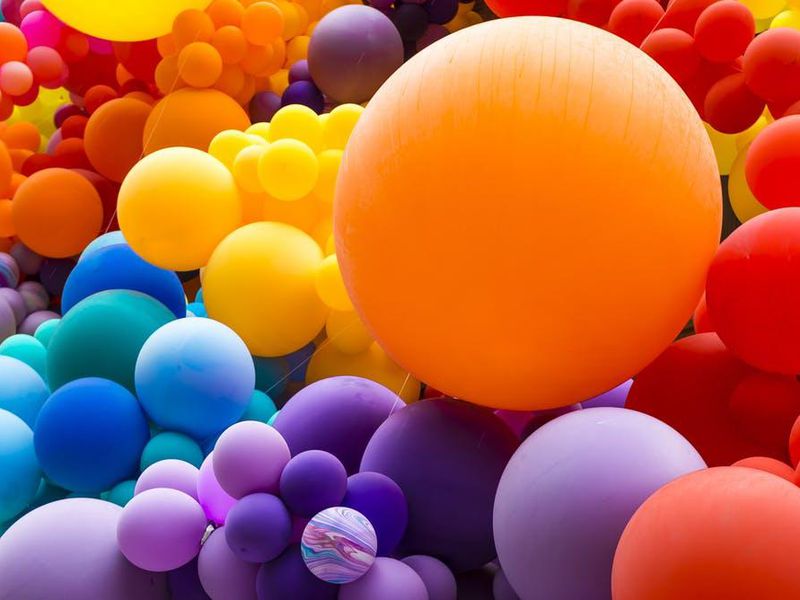Table of Contents
Color and History
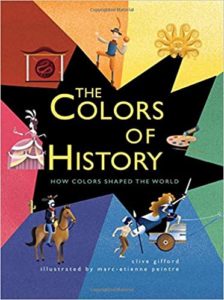 |
By Clive Gifford, The Colors of History: How Colors Shaped the World (QEB Publishing, 2018) is a catchy history of color. Learn about the cave painters’ yellow ocher, and find out about mummy brown, Egyptian blue, and why the Roman emperors wore purple. For ages 8-12. |
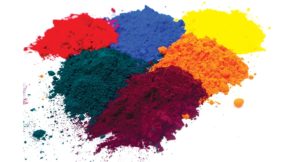 |
Pigments Through the Ages has illustrated histories of purple, blue, green, yellow, orange, red, white, brown, and black. Under Red, for example, readers learn that in China, the Phoenix was called the Vermilion Bird, that Neolithic hunters buried their dead with red ochre, and that the red rose is dedicated to Aphrodite, the Greek goddess of love. |
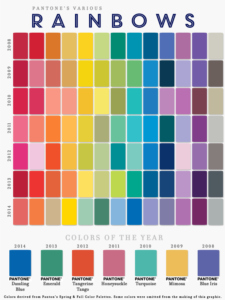 |
From Pantone, check out this 50 Years of Color History infographic – starting with the Psychedelic 60s and the Earthy 70s -and see a list of award-winning Colors of the Year. (2021: Ultimate Gray.) |
| A Graphic History of the Color Pink claims that no other color in modern history has had such an impact on masculinity, femininity, and politics. | |
| Pink is for girls? Really? Read all about it at When Did Girls Start Wearing Pink? from Smithsonian magazine. |
Color Mixing to Color Theory
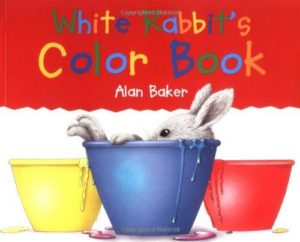
|
In Alan Baker’s White Rabbit’s Color Book (Kingfisher, 1999), White Rabbit plunges into pots of primary-colored paint. Readers learn about colors, color-mixing, shapes, letters, and numbers. For ages 2-5. |
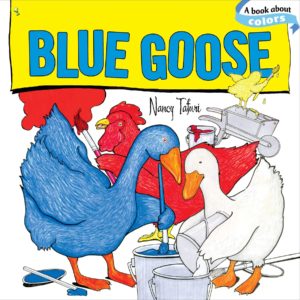 |
In Nancy Tafuri’s Blue Goose (Little Simon, 2010), Blue Goose, Red Hen, Yellow Chick, and White Duck decide to paint their black-and-white barn and farmyard. A story of color and color-mixing for ages 2-5. |
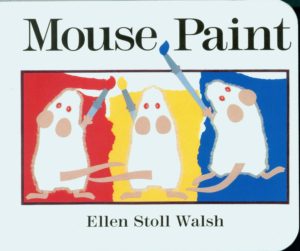
|
Color mixing – in a messy but artistic sense – is the theme of Ellen Stoll Walsh’s Mouse Paint (Houghton Mifflin Harcourt, 1995), in which a trio of plump white mice come upon three jars of paint (red, blue, and yellow) and discover – with a lot of splashing about – how to combine them to make green, orange, and purple. For ages 3-6. |
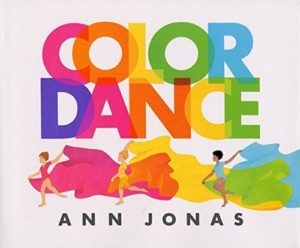
|
Ann Jonas’s Color Dance (Mulberry Books, 1999) explains color-mixing through dance, as three children in leotards twirl and whirl with billowing red, blue, and yellow scarves. For ages 3-7. |
| While the best introduction to color-mixing is almost certainly to plop down some protective newspaper and a few pots of paint and let the kids experiment (“Look, Mom! I made brown!”), there are many resources available for expanding upon this activity. | |
| The KinderArt website has a large selection of great art lesson plans for kids in preschool through grade 12, many with color themes. For example, see “Blotter Bugs” (a color-mixing activity) and “Neutral Colors” (learn all about black, brown, gray, and white). | |
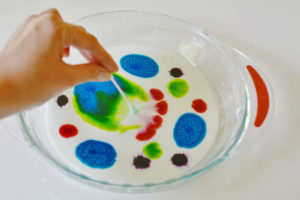 |
Color Changing Milk is a simple (and fun) experiment in which kids explore color-mixing with food coloring, milk, and soap. |
| Learn color theory with The Interactive Color Wheel. | |
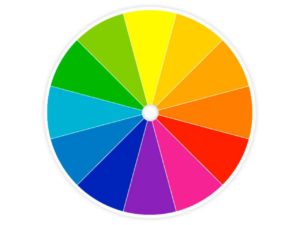 |
Learn all about the history of The Wonderful Color Wheel with terrific period illustrations. |
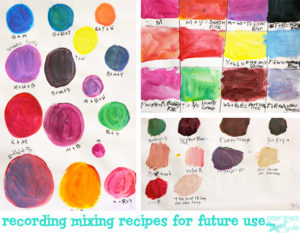 |
From Deep Space Sparkle, a great hands-on color theory lesson in which kids create and name colors. |
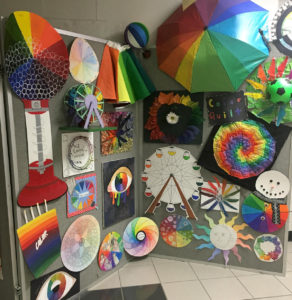 |
Try making your own color wheel project! |
Color and Art
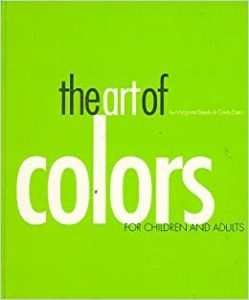
|
The Art of Colors: For Children and Adults (Margaret Steele; Fotofolio, 1999) combines color and art history: kids are introduced to color through twelve different modern art works – for example, purple in an Andy Warhol silkscreen, black in a Louise Nevelson sculpture, red in an oil by Mark Rothko. The book also has a multicultural flair: names of the colors are given in English, Spanish, French, German, and Japanese. For ages 4 and up. |
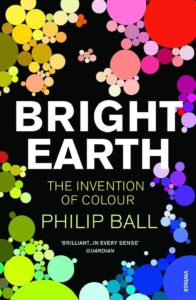 |
Philip Ball’s Bright Earth (University of Chicago Press, 2003) is a detailed history and science of colors in painting. For older teenagers and adults. |
| From Dick Blick, Color Scramble is a project in which kids made geometric color pictures based on the work of Frank Stella, using colored masking tape. | |
| Color Vision & Art covers how color is used by artists, with detailed background information and many illustrations and examples of artworks. | |
| From Mensa for Kids, Introduction to Color is a multifaceted online lesson plan with extension activities. | |
| For many more resources, see Art. |
Seeing in Color
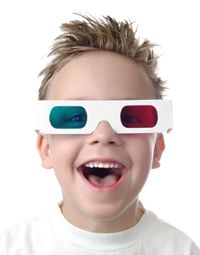 |
From Neuroscience for Kids, Color Vision has background information, illustrations, resources, and experiment suggestions for a range of ages. |
| From Webvision, Color Vision is a detailed scientific explanation of how color vision works. Pair this one with high-school biology class. | |
| The Joy of Visual Perception is an online book on the eye, with many sections related to color and color vision. For example, check out the pages on Newton’s prism, color mixing, color blindness, and rainbows. | |
| From How Stuff Works, How Vision Works includes illustrated information on color vision and color blindness. | |
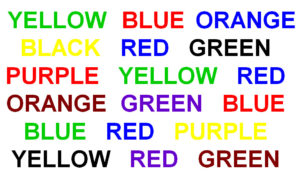 |
In the Stroop Test, players match color meanings with differently colored words. A simple but surprising test on how the brain processes incongruous information. Give it a try here. |
| Read more about the Stroop Test here and try an interactive online experiment. | |
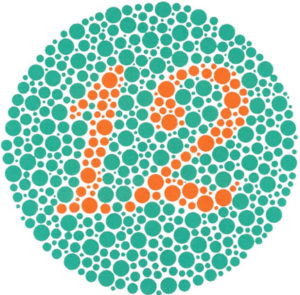 |
Do you think you might be colorblind? Take the Ishihara Color Vision test online. |
Color and Feelings
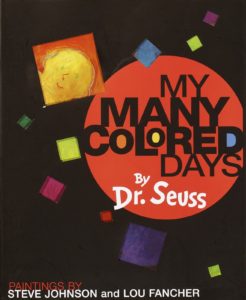 |
Dr. Seuss’s My Many Colored Days (Knopf Books for Young Readers, 1998) is a rhyming association of colors with feelings: on a yellow day, the narrator is “a busy, buzzy bee,” on a green day, a “cool and quiet fish,” on a black day, a howling wolf. For ages 3-7. |
| From the Book Nook, My Many Colored Days has discussion questions and activities to accompany the book. For example, kids make color spinners and color puppets, go on a color hunt, and make color-dyed hardboiled eggs with emotional facial expressions. | |
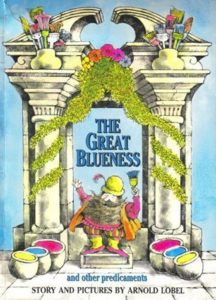
|
Arnold Lobel’s The Great Blueness and Other Predicaments (HarperCollins, 1994) is a wonderful picture book on the emotional impact of color, as a wizard, inventing colors, turns a little town blue (which makes everybody sad), yellow (which gives everyone headaches), and red (which makes everyone angry), until finally coming up with the best solution: to use all the colors at once. It’s out of print, but worth tracking down. Check your library. For ages 4-8. |
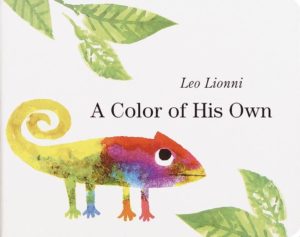
|
Leo Lionni’s A Color of His Own (Knopf Books for Young Readers, 2006) is a story about learning to know and value oneself, told from the point of view of a chubby little chameleon who doesn’t want to change color. For ages 4-8. |
| Also by Lionni, Little Blue and Little Yellow (HarperCollins, 1995) is a story about friendship (the colors ultimately blend to form a beautiful green). For ages 4-8. | |
| From The Great Courses, How Colors Affect You: What Science Reveals is a six-lecture course on the meaning and psychology of color by Professor William Lidwell of the University of Houston. Available for download or on DVD; watch the website – periodic sales offer the courses at a fraction of the listed costs. |
